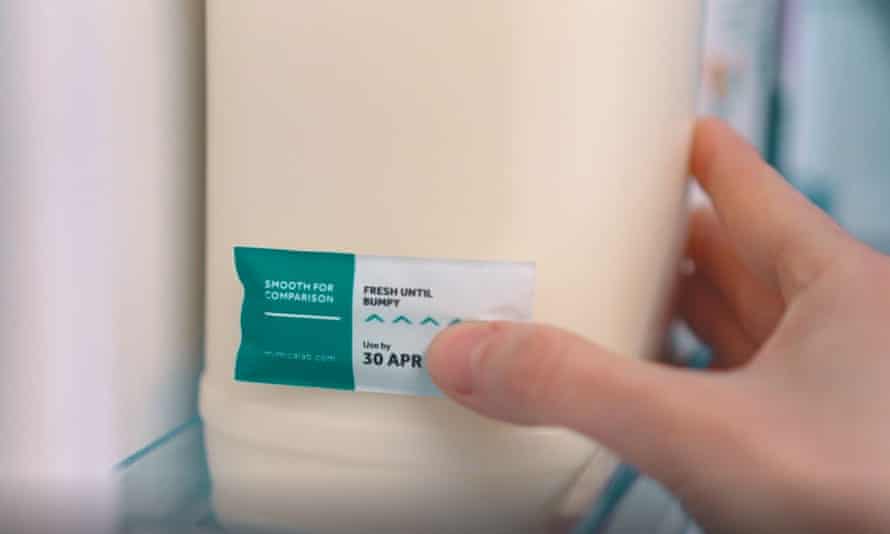From fly oil to 3D-printed biscuits: the women reimagining the food of the future | Guardian Careers
When Grace O’Brien’s friends said they could never go vegan because eggs were “in everything”, it got her thinking about creating an alternative. She experimented with different beans and bases for the recipe, including soy, pumpkin and lentils, to make an egg-like substitute that tasted close to the real thing.
“I started by tinkering around with different ingredients and eventually got to something that worked pretty well, but I wanted to take it to the next level – that’s when I sought out a PhD food scientist to help me,” says O’Brien, who studied design and engineering at Stanford University.
The slightly nutty flavour of chickpea eventually won out – her alternative to eggs are made from chickpea flour – and last year her business, Peggs, was born.

O’Brien hopes it will help make veganism more accessible: “Behaviour shifts are often caused by the availability of good options. For example, there are so many alternative milk options, even those who aren’t vegan have started to enjoy them. The alternatives are so accessible and delicious that it can change consumer habits.”
O’Brien is one of many female food technologists creating new products for environmentally conscious consumers. While women are typically woefully underrepresented in many Stem (science, technology, engineering and maths) sectors, food science is not generally one of them. Almost three-quarters (72%) of food science technologists in the US are female according to Career Explorer and almost half (48%) of the Institute of Food Technologists’ (IFT) members are female. Meanwhile, an IFT study in 2018 of universities in the US found that 79% of students in food science identified as female. And with the urgent need to reduce the environmental impact of food production, many in the sector are turning their attention to dairy alternatives, new protein sources and lab-grown meat.
Elzelinde van Doleweerd, another female pioneer with a background in design, set herself the challenge of reusing food waste, particularly bread – the most wasted food product in the Netherlands. As part of her final project in her degree in industrial design, she developed 3D-printed food products, combining “new technology and products that are normally thrown away, such as old bread, fruit and vegetables”. They are turned into purees and transformed into intricately designed biscuit-type snacks. Van Doleweerd founded Upprinting Food and her creations are served in Michelin-starred restaurants, including The Alchemist in Copenhagen.
She loved the idea of changing the appearance of food, including “wonky” vegetables, to make them more appetising. “By baking and dehydrating the printed food afterwards, it also gets a much longer shelf life,” she says.
She is currently working on a new project using edible paper sheets, made from fruit and vegetables and pH-reactive liquids. “The technology of 3D printing is growing rapidly, providing opportunities to produce, and reduce, on a larger scale, but also printing with multiple materials at the same time,” she says.

Another trend is the rise in less conventional sources of protein, says Tamara Southworth, product and innovation team lead at BOL Foods, which makes a number of products, including charcoal noodles. “In the next decade, we should expect our protein to come from more unusual sources such as pea, hemp and sunflower,” she says.
Dr Keren Kles, a freelance food technology consultant, believes that this expansion of protein sources will include insects and says products made from bugs, such as mealworms, crickets and grasshoppers, will play a much bigger role in our diet over the next decade or so. However, Kles, who in a former role as CTO of Israeli startup Flying Spark helped to harness protein from fruit flies, admits that introducing people to new products and tastes can be very challenging. While earlier this year a market research report predicted the edible insect market would be worth $4.6bn (£3.25bn) by 2027, consumers may need some convincing.
One of the reasons Flying Spark used fruit flies is because the finished product looks and tastes similar to protein powder, says Kles. The larvae is crushed and converted into protein powder, oil and other textured products for meat alternatives. “The powder from the larvae has a neutral flavour, which can be easily incorporated into products such as protein bars, baked goods and meat alternatives,” Kles explains. “Fruit fly is a very efficient and clean insect to grow on a large scale and results in a nutritious and neutral taste.”
But it’s not just food being revolutionised. Food packaging is also being reimagined to become more eco-friendly and help reduce waste.
Giorgia Raci, research and development lead at Mimica, which designs and creates touch-sensitive sensors to tell you how fresh food is, says its product started as a project to help blind people know when their food goes off.

Its first product, Mimica Touch, which took almost four years to make, is a label containing a plant-based gel that decays at the same rate as food. “When it [the label] is smooth the food is fresh and when you can feel bumps the food should no longer be consumed,” says Raci.
It is now being touted as a way of giving people more precise information than expiry dates, and thereby reducing the amount of food that is binned.
Raci hopes it will expand to include any perishable products, not just food. “We started with perishable foods such as juice, diary and meat, because that’s where we see the most waste, but we’re now looking at medicine, cosmetics and blood donations,” she says.
It will be launching Mimica Touch bottle caps on juices in European retailers in a few months. “In five years we want to be on the top five perishable items in people’s shopping baskets in Europe, North America and starting to look at other global markets,” Raci says.
Source: theguardian.com

